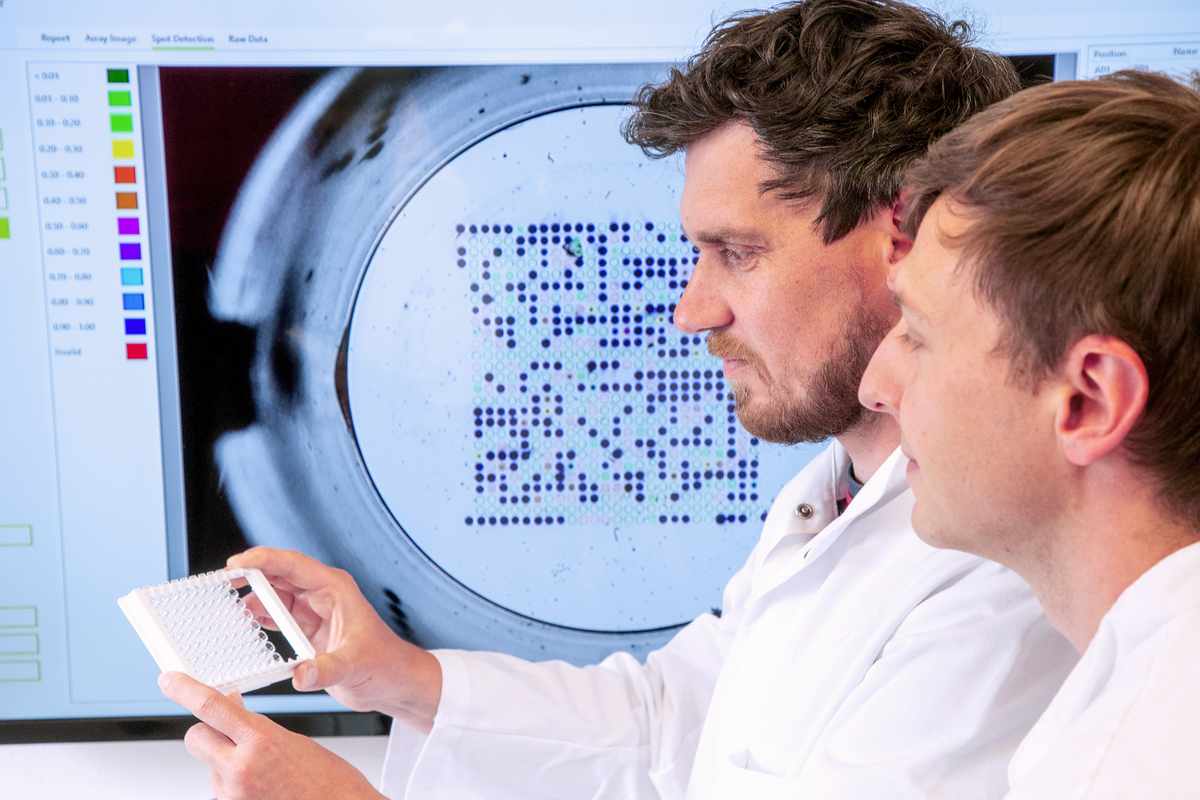Genetic analyses are becoming increasingly important in diagnostics and research into infectious agents. They can be used to track the spread of bacterial strains in hospitals and to analyse their resistance or virulence genes. For a complete sequencing of the genetic material of the pathogens, expensive equipment and complex bioinformatic data evaluation are necessary. This limits the possibilities of application, because especially in the case of resistant pathogens, rapid action in hospital hygiene is crucial. With the "INTER-ARRAY Genotyping Kit S. aureus", researchers at fzmb GmbH have now brought a new microarray test kit onto the market, which in many cases represents a cheap, fast alternative and useful supplement to sequencing.
In the new test kit, bacterial genes are detected using the microarray hybridization method, which has already been tried and tested at the research campus: several capture molecules are applied to a biochip in a very small space, to which DNA fragments from a bacterial culture can bind. If such a binding occurs, the corresponding field on the chip changes colour and can be read optically. Based on the resulting patterns, the researchers know immediately which genes are present. Like a genetic fingerprint, this information can be used to determine, for example, whether several isolates from an intensive care unit are identical, which could mean an outbreak.
Virulence and resistance determination: 336 DNA sequences from 170 markers
"We use the kit to test for 336 DNA sequences of 170 relevant markers, giving us an accurate indication of the presence of virulence factors and resistance genes. By combining this genetic information and matching it with an extensive database, we can distinguish and epidemiologically track over 700 strains of Staphylococcus aureus," explains biotechnologist Katrin Frankenfeld, Chief Operating Officer for INTER-ARRAY at fzmb GmbH. The company cooperated with InfectoGnostics researchers Prof. Ralf Ehricht and Dr. Stefan Monecke from Leibniz-IPHT in the selection of the target genes and sequences as well as the construction of the database of strains. Thanks to the public-private cooperation in the research campus, the INTER-ARRAY genotyping kit could already be used at the end of 2021 for the validation of a rapid test for the detection of the bacterial toxin PVL.
Major advantages of the microrarray system are its high scalability and easy adaptability, as Katrin Frankenfeld explains: "We can arrange several of these microarrays next to each other as a high-throughput format and thus simultaneously test up to 96 isolated pathogens from samples. In the future, it will also be possible to design new kits with DNA sequences for further markers or even for other species, making the system flexible for scientific research and for hospital hygiene concerns."
Further information: www.inter-array.com
